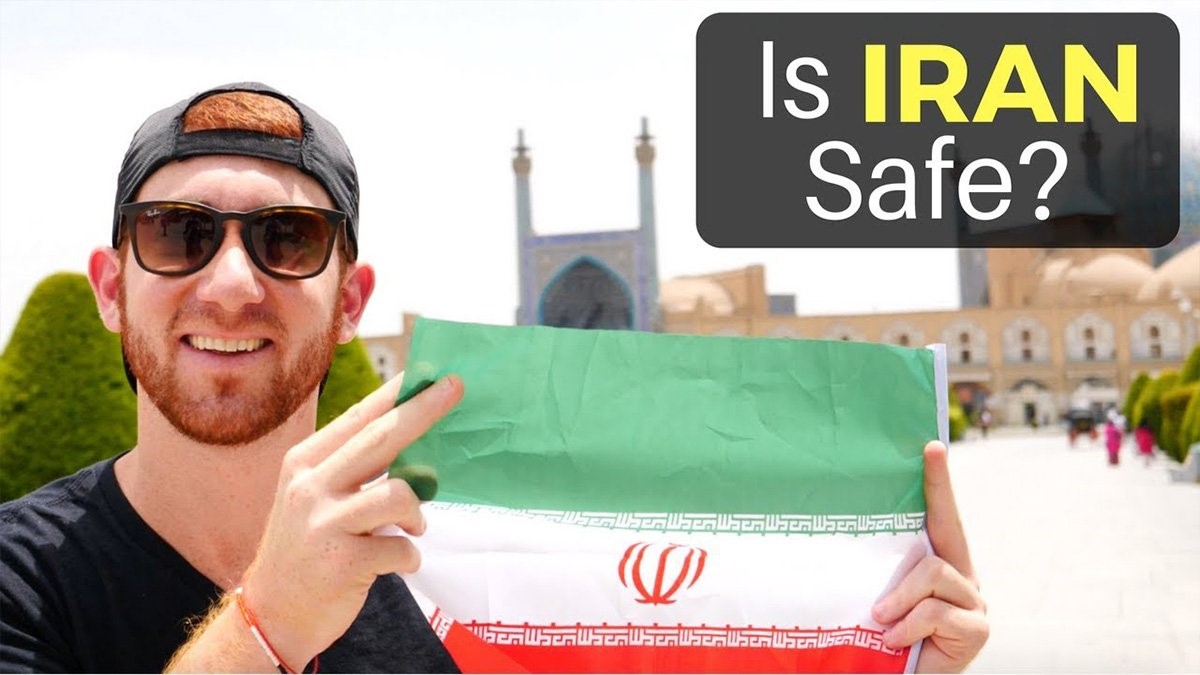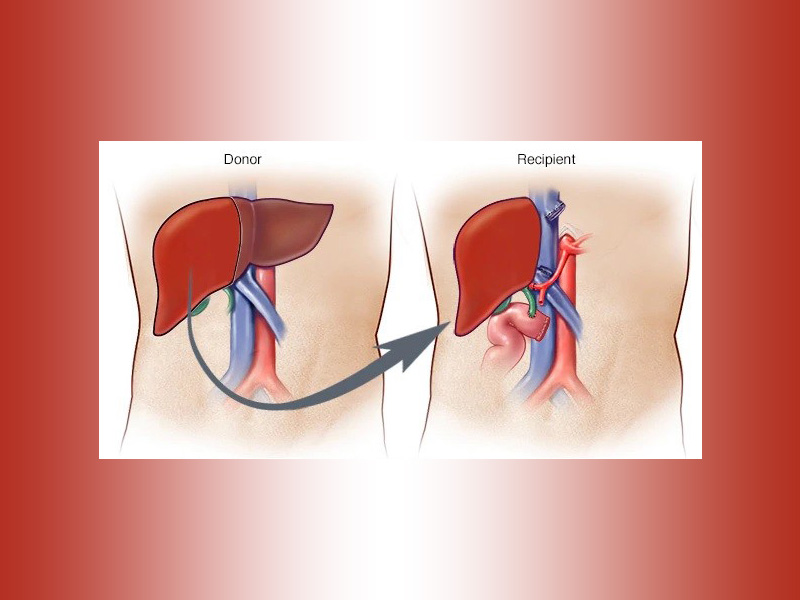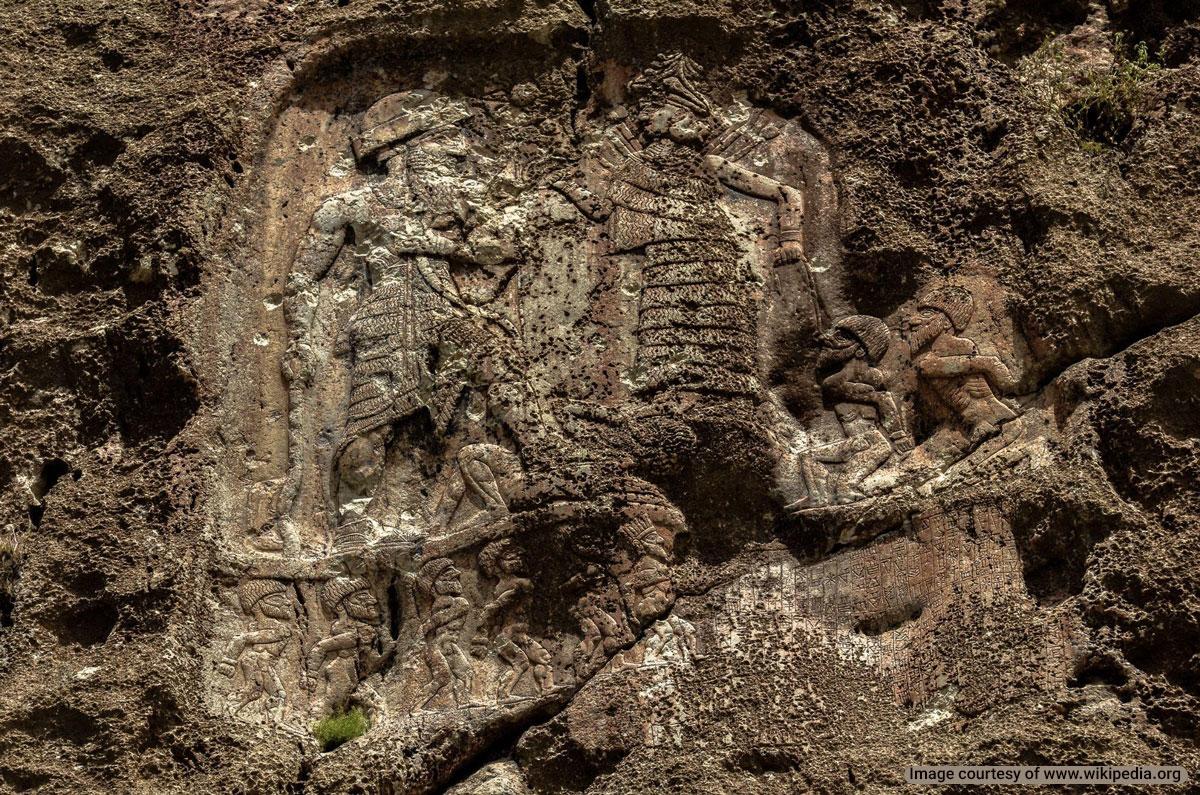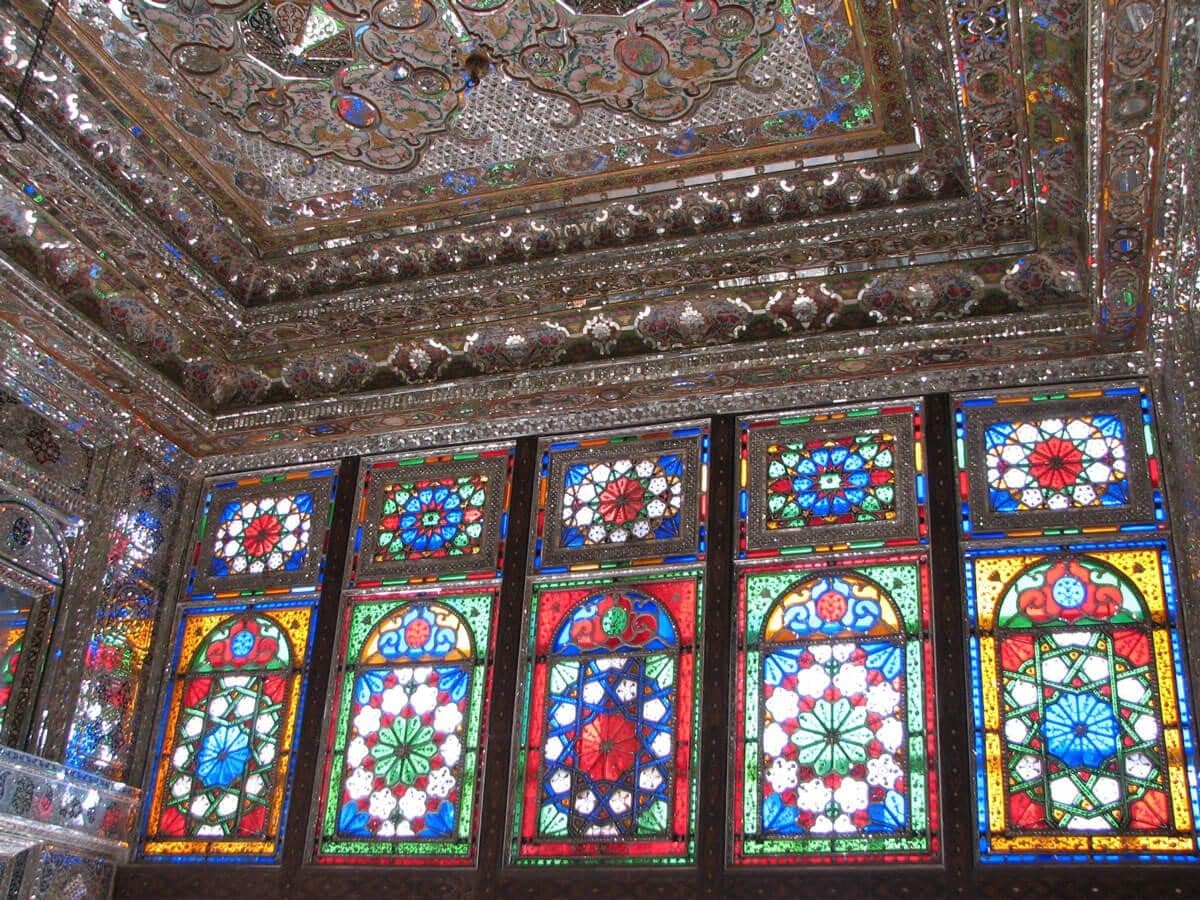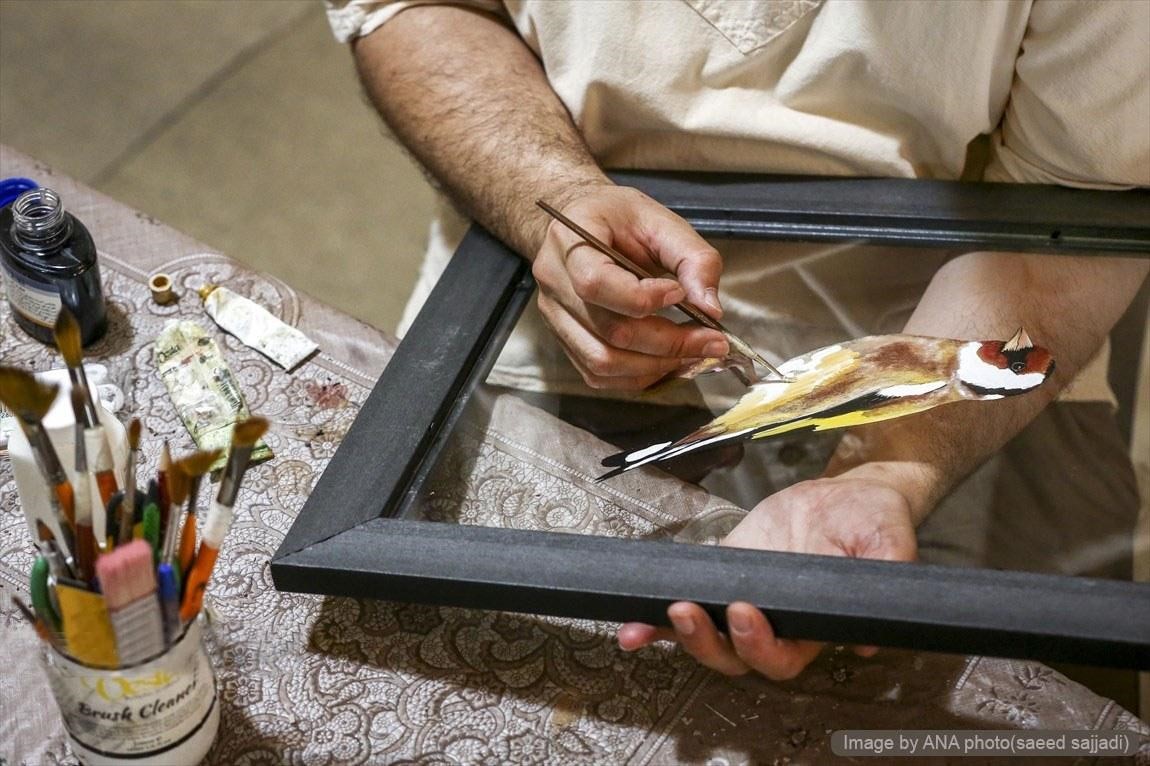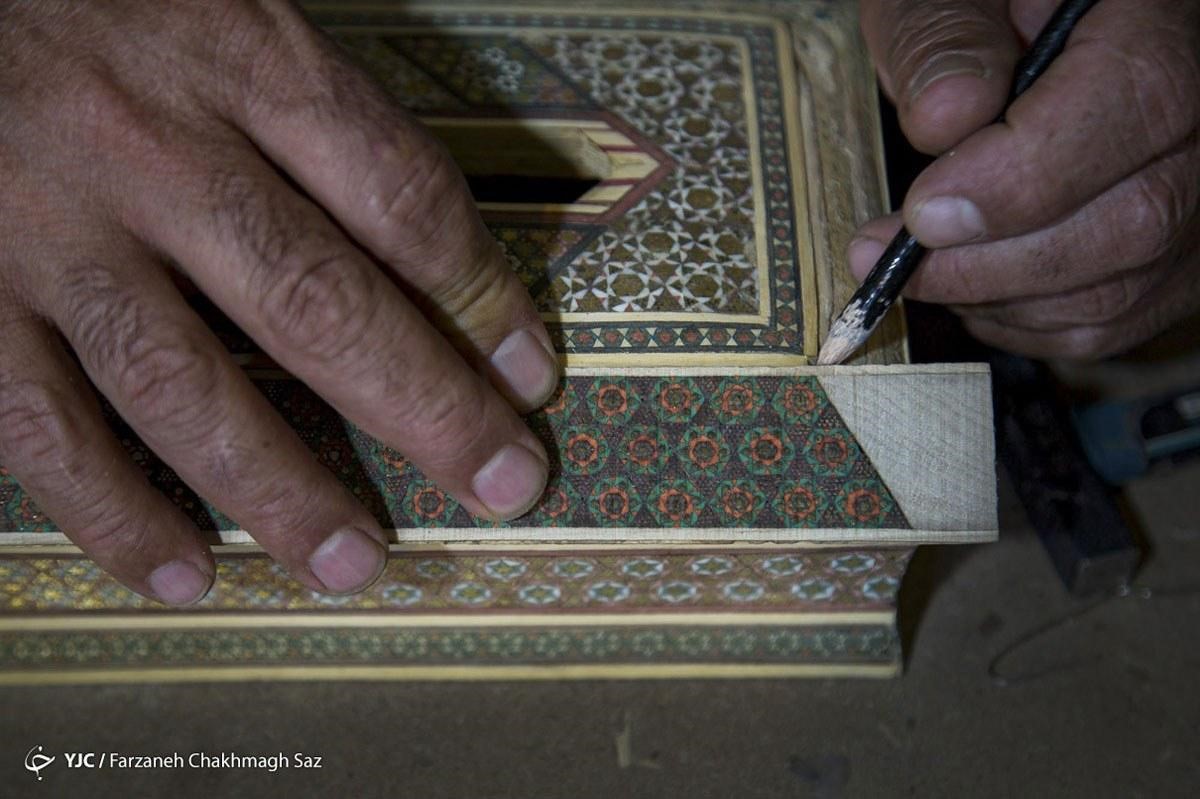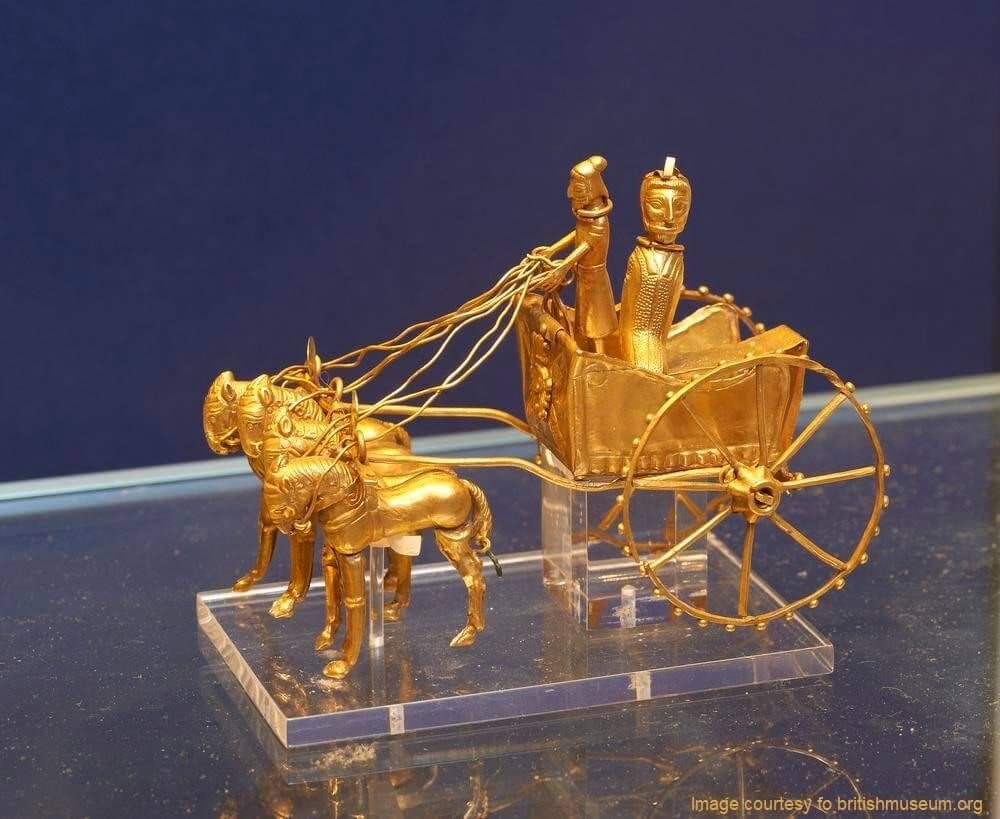
Like other countries, Iran handicrafts are a collection of arts and crafts that utilize local raw materials using traditional methods and hand-made tools. The craftsperson or builder’s artistic expression and cognitive creativity manifested in the handicrafts make it unique compared to automated industrial production. All handicrafts originate from a region’s history, culture, and ancient civilization.
UNESCO lists Iranian handicrafts and craftsmanship among Iran’s cultural heritage. They are considered intangible cultural heritage. In addition to its advantage for the tourism industry, Iran handicrafts can be a secondary source of income for farmers in villagers.
History of Iran Handicrafts
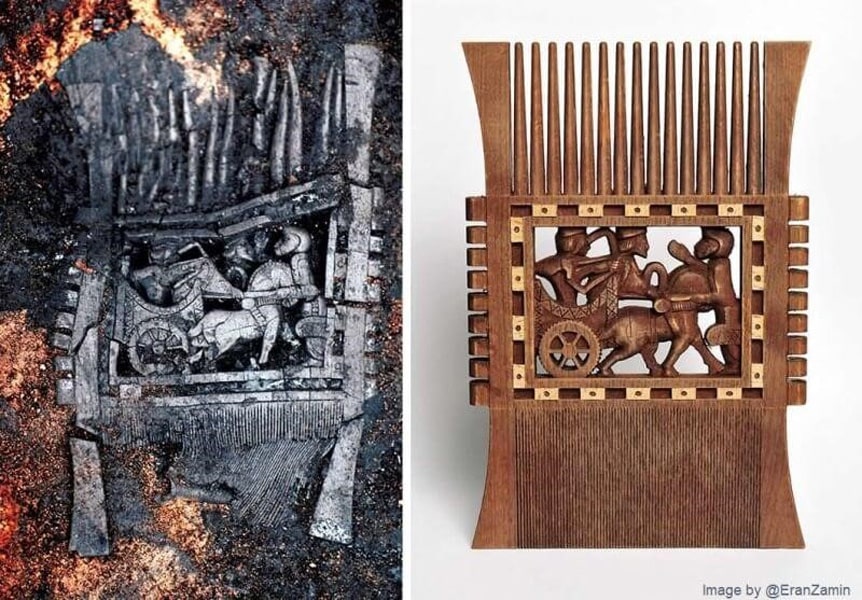
Handicrafts embody the cultural identity of the Iranian people, have roots in our civilization, and their history goes back to ancient Persia. Traces of handicrafts found in archeological sites date back to the emergence of grain cultivation in Iran nearly 6000 years ago. During this period, the widespread production of pottery dishware created a new chapter in the history of Iran handicrafts. However, this was only the beginning.
Other developments occurred worldwide around 2700 BC and used high-quality raw materials in handicrafts. During this period, the talents of Iranian craftspeople and artists in metalwork, creating mortar and pestle (manual grinder), sculpture, and pottery were admirable. Therefore, the primary history of Iranian handicrafts began at that time.
General Classification of Iran Handicrafts
Iran handicrafts has developed based on the climate and features of the cities and villages across the country. Over the years, the diversity of these crafts has grown. Iranian Academy of Arts has divided Iranian handicrafts into the following categories:
Hand-woven and Loom-woven Textile in Iran Handicrafts
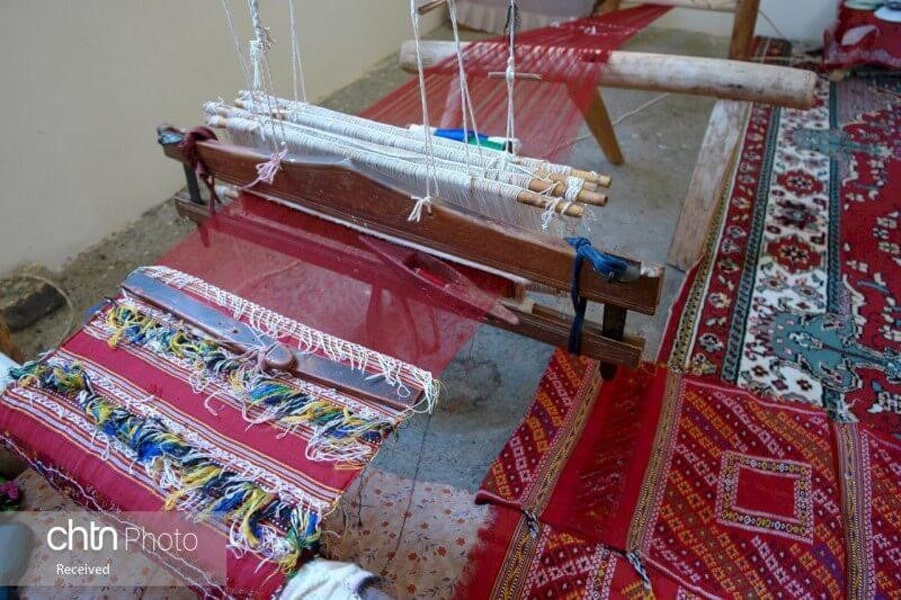
This is the oldest form of handicraft that naturally developed to fulfill the basic need for clothing and cover. Even today, hand-weaving different kinds of carpets and rugs is a popular tradition in different provinces of Iran.
According to the various handicrafts created so far, Dari (hung) handwoven products can be divided into the following:
- Carpets and rugs: includes all types of wool, silk, wool-silk, and other blends of fibers.
- Kilim Rugs: includes rugs with one-sided or two-sided weaving and other varieties of kilim textiles.
- Gebbeh or Gabba Rugs: a rug woven in small dimensions by Lor and Qashqai nomads.
- Ziloo: It is very similar to the Kilim, except that it is woven with cotton fibers, while the Kilim is woven with wool.
Products woven with traditional machines include the following:
- Gabba weaving: Gabbe is a type of thick rug that can be traced back to primitive humans. Handicraft artists weave this rug in smaller dimensions with longer piles than a rug.
- Silk weaving: These hand-woven fabrics are woven from silkworm cocoons. These handicrafts are known as the most delicate and beautiful handwoven textiles.
- Bedspread weaving: artisans use colored fabrics with plaid patterns made of wool or silk to weave this handicraft product.
- Velvet weaving: hand weaving delicate threads made of silk, cotton, linen, or wool.
- Navar Bafi (card weaving): Card weaving or Navarbafi is one of the oldest handicrafts of Iran, which has different names in different regions. Among its other names, we can mention Penbafi, Modakhelebafi (intertwined weaving), etc.
- Chafiyeh Bafi: The art of weaving is a fabric with a plaid pattern used as a headband.
Traditional Embroidery
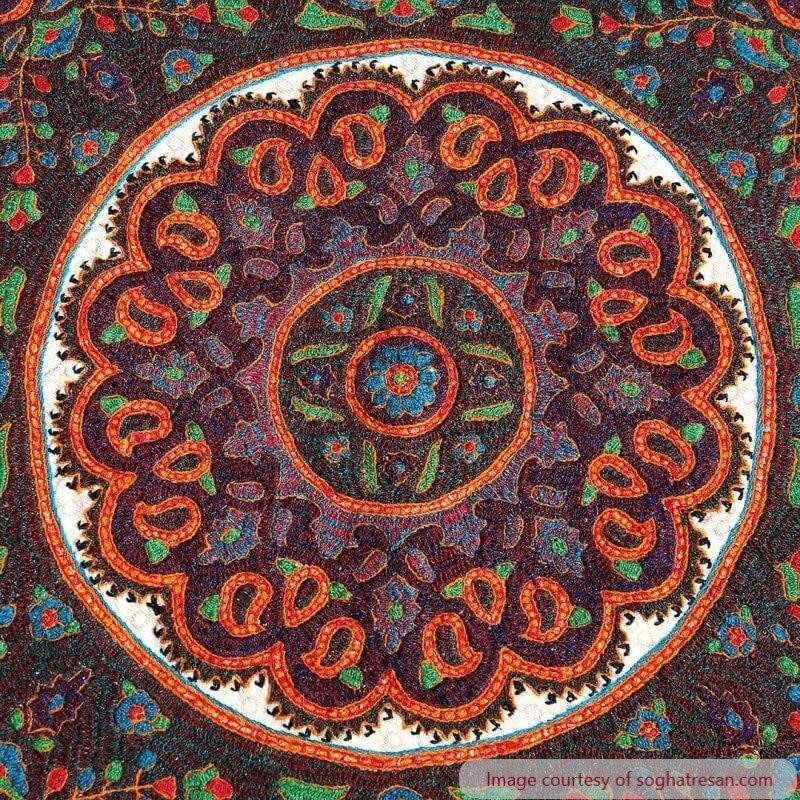
It includes all types of sewing on fabric. These handicrafts decorate clothes and other accessories, such as tablecloths, rugs, and covers. Traditional embroidery, done with various tools in different cities of the country, is one of the most common handicrafts in Iran.
The different types of embroidery are:
- Needlework: It uses thread and needles on fabric and other surfaces. This handicraft is popular in Baluchestan, Mamaqan, Sistan, and among Turkmen tribes.
- Malileh Doozi or Sermeh embroidery: decorating the fabric’s surface with gold, silver, and different alloys, common in Isfahan, Yazd, Kerman, Kashan, and Tehran.
- Poteh Doozi embroidery: includes Bukhara embroidery, pattern embroidery, and tape embroidery. The canvas for such embroidery is a thick woolen fabric called Ariz.
- Crocheting: It is done in three ways: plain, embossed, and debossed. Debossed is a beautiful and creative crochet technique. The crochet hook is metal, and the tip of the hook is not curved. This type of embroidery is popular in the cities of Isfahan and Rasht.
Metal Handicrafts in Iran
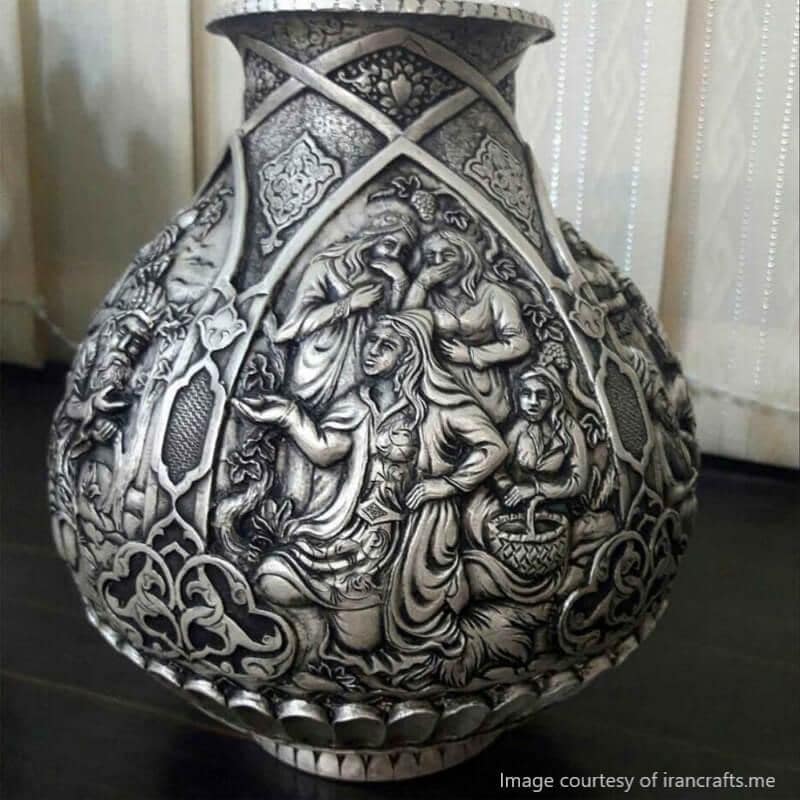
Metal was discovered in ancient Persia and was used to prepare utensils and other necessary tools. Examples of these metal tools have been discovered in archaeological sites across Iran. Today, these handicrafts are continued as silversmithing and coppersmithing.
This type of Iran handicrafts includes different techniques, which include:
- Davatgari (metalsmithing): crafting metal objects such as samovars and trays by shaping the metal without heat.
- Metal engraving: a manual printing method used to engrave images, letters, and words on metal.
- Toreutics: decorating and carving designs on metal objects, especially copper, gold, silver, and brass.
- Filigree: The art of soldering delicate silver wires on metal surfaces is more common in Ardabil, Zanjan, and Borujerd.
- Goldsmithing: crafting jewelry and accessories from gold.
Mina Kari or Vitreous Enamel
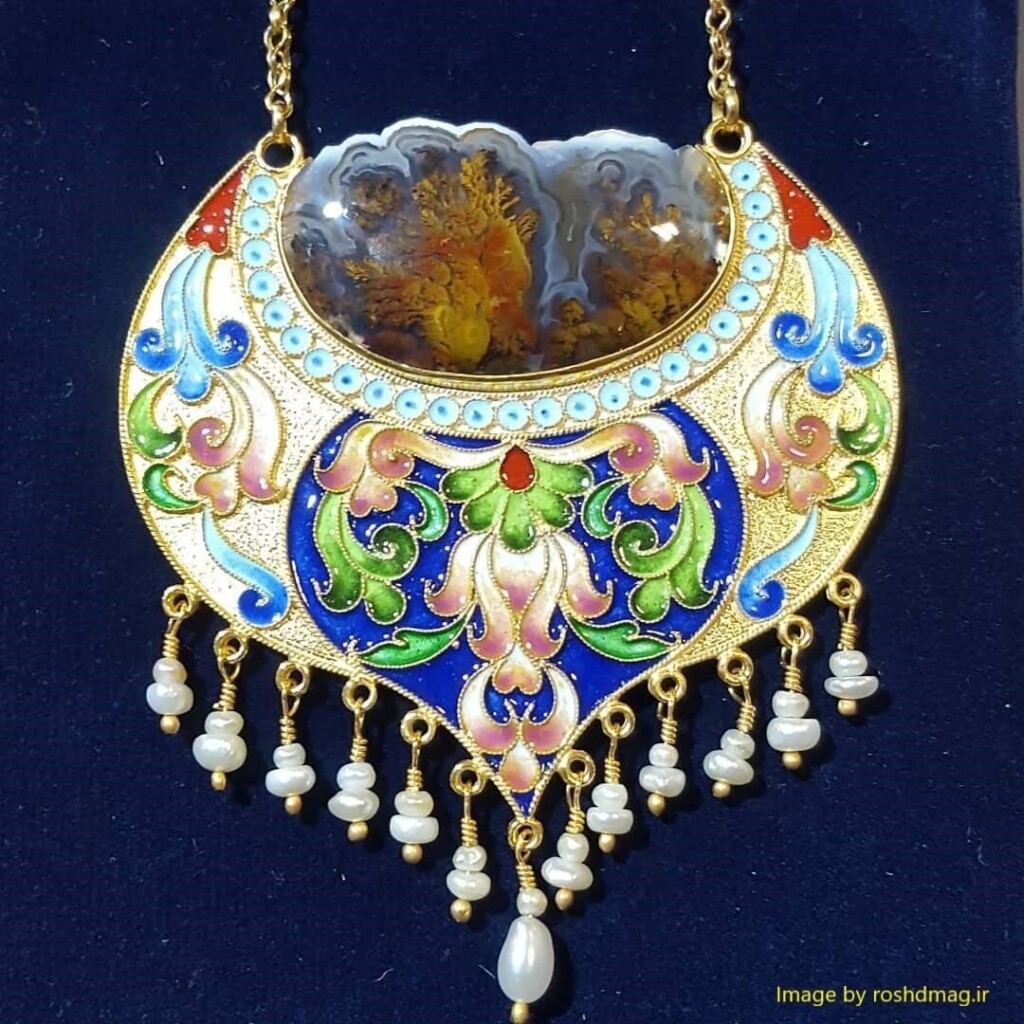
This group of Iran handicrafts results in the most beautiful dishes and decorative items that are very challenging to create. These items are among the most expensive handicrafts in Iran made by the most skilled artisans. The history of these handicrafts goes back 5000 years. It includes applying a mix of matte colors on tiles or metal surfaces.
The different sub-branches of vitreous enameling include the following:
- Khanehbandi or Cloisonné: in this method, various objects are decorated with thin brass wires with the layout of cells, as Cloisonne means cell in French.
- Morassa’ or ornamented enamel: It is the most challenging technique of vitreous enamel in which the dishes are decorated with gems or precious stones.
- Painted Enamel: in this technique, the dishes are covered in a white glaze, then decorated with painted patterns and figures.
- Latticed Enamel: A technique that creates designs on the dishware by creating openings or holes.
- Sabi enamel: In Sabi enamel, enameling is done on gold; so the results are practically jewelry.
Pottery Handicrafts
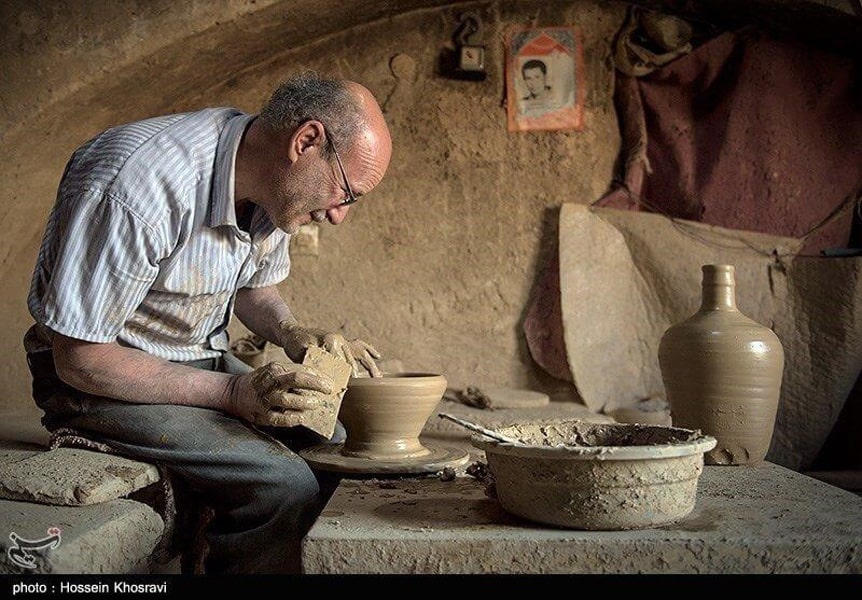
The history of pottery in Ancient Iran is rich because of easy access to soil. In the past, clay pots were created by mixing water and soil. Later, clay was used instead of regular soil.
Vases and bowls found in historical monuments are the most prominent historical handicrafts and among Iran’s oldest handicrafts. In general, pottery is one of the Iran handicrafts divided into unglazed and glazed kinds.
Pottery is divided into two types:
- Unglazed: handmade pottery, wheelwork pottery, clay relief figurines
- Glazed: enameled pottery, pottery glazing, painting over or under the glaze, ceramic tiling, pottery making, etc.
Glassware Handicrafts of Iran
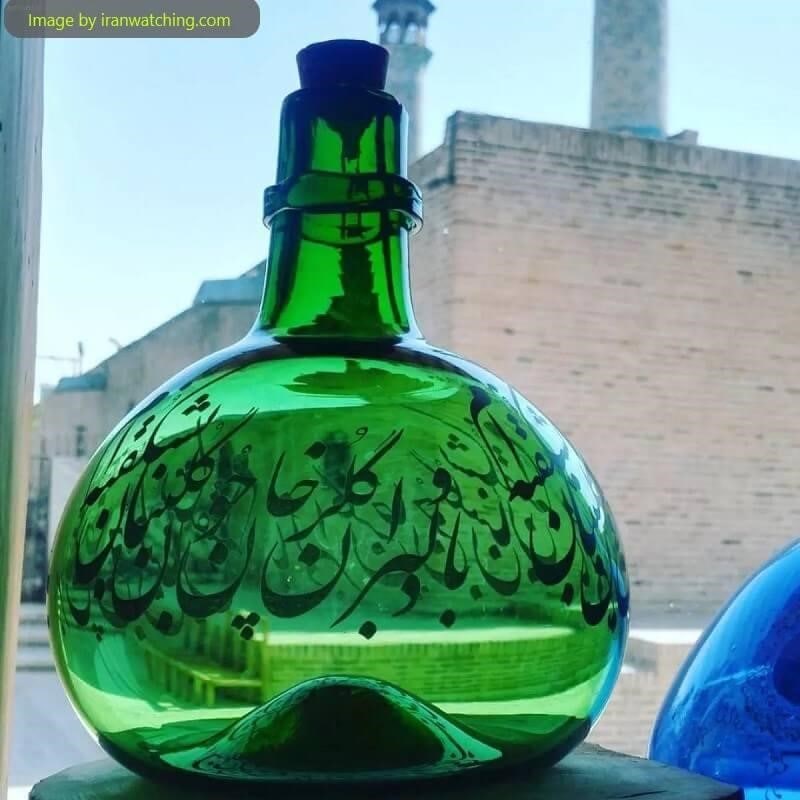
One of the most beautiful handicrafts of Iran is Abgineh, or glassware, with several historical examples discovered in different parts of the country. The most beautiful works are in the Glassware and Ceramic Museum of Iran, on 30 Tir St. in Tehran.
Glassware handicrafts are divided into sub-branches:
- Glass forming: It is the art of shaping glass, performed in three ways: glassblowing, glassblowing and mold, and mold. Among the types of glazing, we can refer to Barftan (Opaline), two-layer, and three-layer glazing.
- Glass Art: This branch of glassware handicraft includes decorating glassware after forming. Glass art techniques are as follows:
- Cut glass: It is used to create decorative handicrafts.
- Painting on enamel glass: After the glassware cools down, the artisans paint on the surface.
- Painting inside the glassware: It is more complex than painting on glass.
- Abgazkari: The glass is exposed to sudden temperature fluctuations in this technique. The resulting cracks in the glassware are shaped to create beautiful patterns.
- Mat Kari or Matting: In matting, they use hydrofluoric acid, which can dissolve the outer surface of the glass. In this way, the glass becomes matte.
- Combining glass and metal: glass and metal are combined, creating beautiful handicrafts.
Wooden Handicrafts Techniques in Iran
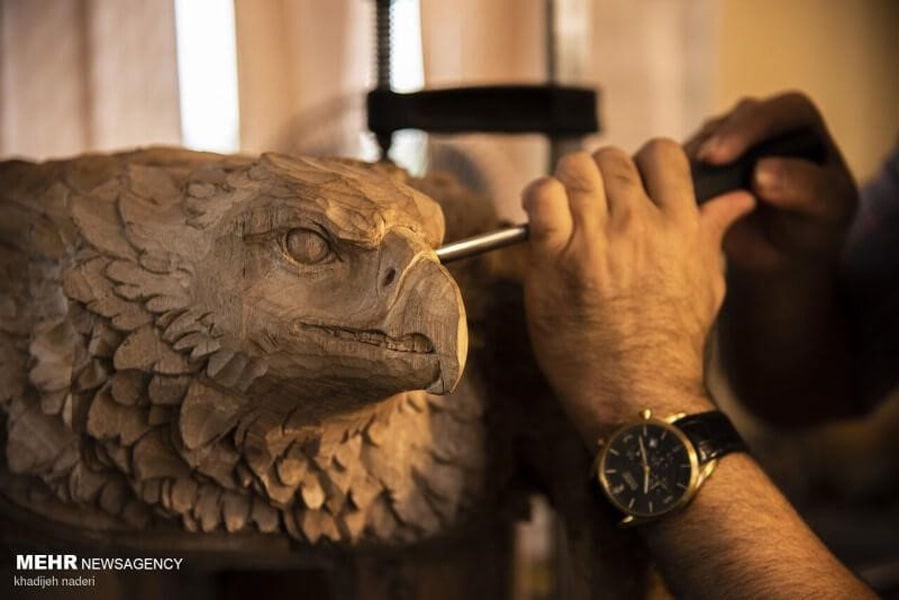
Wooden handicrafts are widely made in different cities all over Iran. The primary forms of woodworking include woodturning, inlay woodworking, Marquetry, Khatam inlaying, and fretwork.
Different types of wooden handicrafts are:
- Sculpting: In this method, the sculptor tries to recreate figures of the human body, birds, and animals using wood.
- Orsi Sazi: creating hung sash doors and windows open and close vertically.
- Khatam Kari: an ancient technique for making wooden handicrafts by inlaying geometric pieces of wood, glass, bone, and metal.
- Sookht Rooye Choob or heat embossing: the wooden surface is marked using a hot metal wire, which burns the patterns into the wood.
Iran Handicrafts Made of Stone in Iran
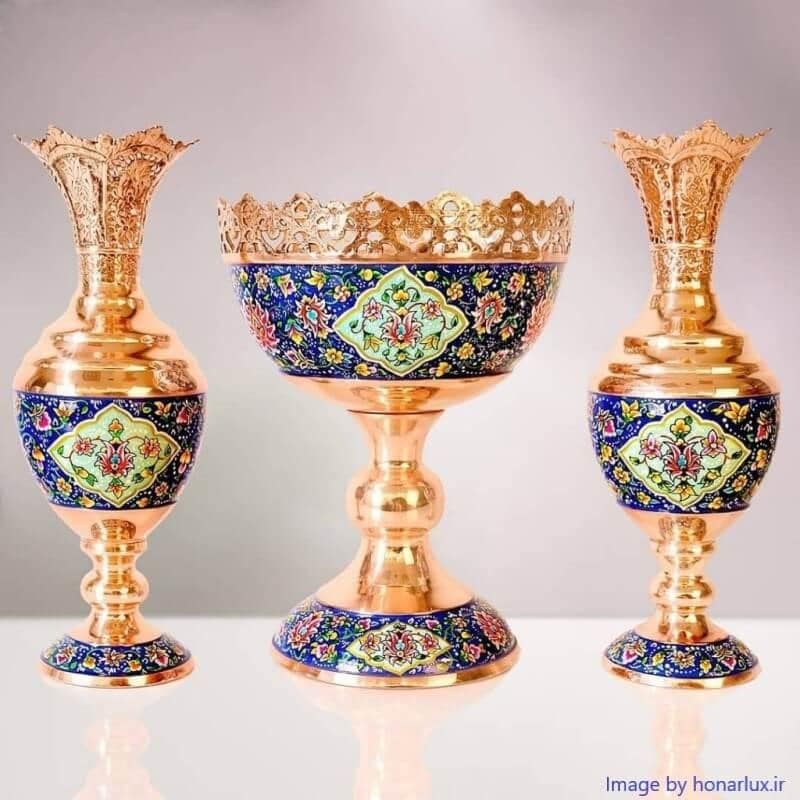
Cutting and engraving stones were one of the first Iran handicrafts, which has changed significantly. After the discovery of beautiful decorative stones, stone cutting, and engraving opened the way for creating decorative stone handicrafts.
The different branches of this handicraft are:
- Masonry: In masonry, a piece of natural stone is transformed into a decorative handicraft by removing certain parts.
- Kharati or Stone turning: this art uses a turning wheel that rotates the stone on an axis. It is shaped to make objects such as vases, bowls, etc.
- Stone Mosaic: Cutting colored stones and piecing them together to create decorative designs.
- Moshabbak or perforated stone: It is one of the most prominent Iran handicrafts and is related to traditional architecture; after cutting and polishing the stone, they mark patterns on it and remove the unwanted parts. In this way, the stone becomes meshed or perforated.
- Stone Engraving: carving different designs on precious stones is called stone engraving.
- Morassa’ Kari or bejeweling: The use of jewelry in decorating dishes, ornaments, and other decorative objects is called Morassa’ Kari.
- Firozeh Koobi or turquoise lapidary: sticking turquoise stones on copper dishes is called Firozeh Koobi.
Miniature Painting in Iran Handicrafts
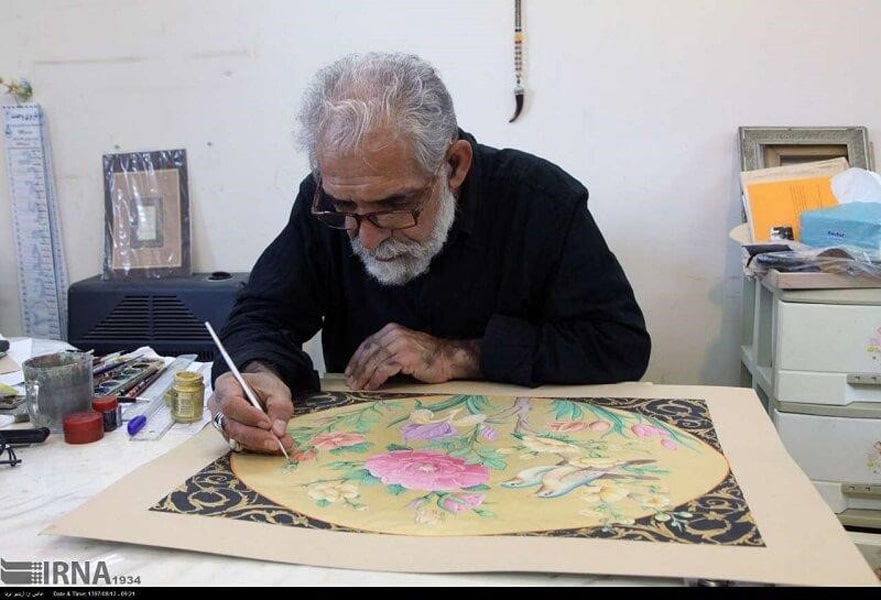
This branch, which includes visual arts, is the basis and prerequisite for many handicrafts in Iran. Outstanding examples of Iranian miniature paintings are kept in the Reza Abbasi Museum in Tehran.
Miniature painting includes different branches:
Miniature painting for books and Muraqqa: Muraqqa is an Islamic album book combining different art forms, including miniature illustration and calligraphy. The miniature painting includes three sub-branches:
- Tazhib or Illuminated Manuscript: illustration, coloring, gilding, polishing, and delicate illustration of all sorts of designs with vegetation, geometric, and sometimes human and animal patterns to decorate different pages is called Tazhib.
- Tash’eer: In this method, the page’s borders are decorated using ornamental patterns of animals, birds, flowers, and plants.
- Birds and Flowers or Gul-i-bulbul: In miniature painting, it is customary to use flowers and birds, which symbolize God’s grace and the delicate manifestation of the Creator.
Persian Motifs: in this sub-branch of miniature painting, which is one of the unique handicrafts of Iran, various motifs such as the story of Siavash and the tragedy of Rostam and Sohrab are used, including the following:
- Carpets and rug design: Using Persian motifs on carpets and rugs turns them into beautiful works of art.
- Pen illustration: Drawing illustrations of Persian motifs using a pen.
- Girih tiles: It is one of the branches of architecture and tilework, and sometimes it is also among the sub-branches of the woodworking industry. This method creates unique geometric designs by combining different geometric shapes and words together.
Crafting painting tools: The skill of crafting various painting tools is considered among Iran handicrafts, which includes the following:
- Boom Sazi or Canvas making: painting flowers and birds require special papers called boom (canvas).
- Making traditional pens and brushes: Considering that there are many steps in miniature paintings, different pens and brushes are needed to complete the process
- Traditional production of adhesives and oils: Coating and polishing oils and adhesives are used to create miniature paintings.
Seal making: This is also one of the other branches of miniature painting.
Traditional Prints in Persian Art
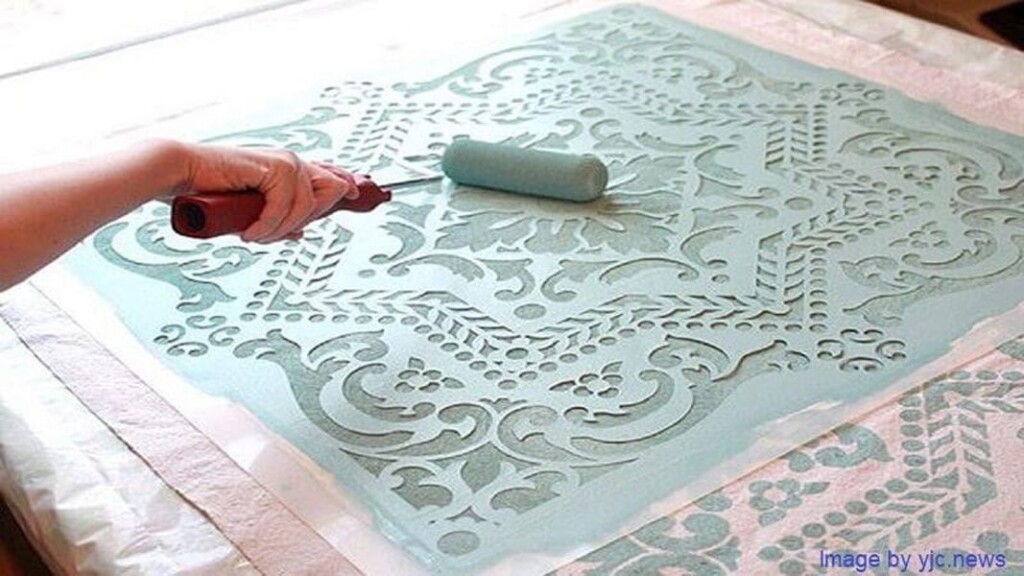
In the past, this art comprised printing on paper and fabric, but today it is used in the decoration of facades of mosques and historical buildings. An example of it can be seen in Sheikh Lotfollah Mosque
Handicraft Wool Clothing in Iran
This branch of Iran handicrafts is widespread among nomadic people and livestock farmers. They began producing wool clothing due to living in cold regions. These handicrafts are woven using the skin and wool of lamb and sheep (Ouchmak in the Turkmen dialect).
Felt-Making Handicrafts Across Iran
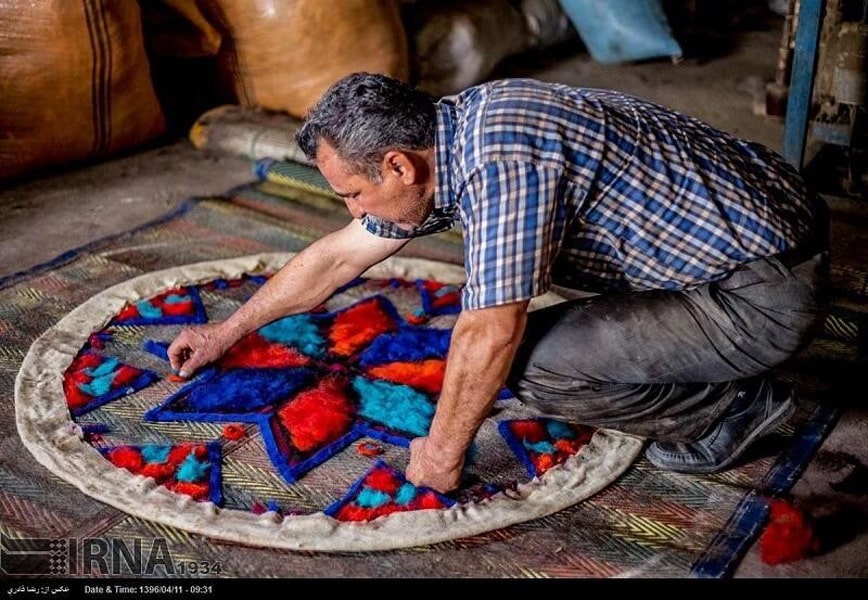
It is one of the most authentic Iranian professions. Felt Textile is used in the manufacturing of carpets, underlays, blankets, and other products. The felt used in making the mentioned products is manufactured by dyeing and compressing sheep wool.
Felt textile is prepared by kneading the wool with hot water. This practice is considered one of Iran’s most physically exhausting fields of handicraft arts.
Traditional Wicker Handicraft in Iran
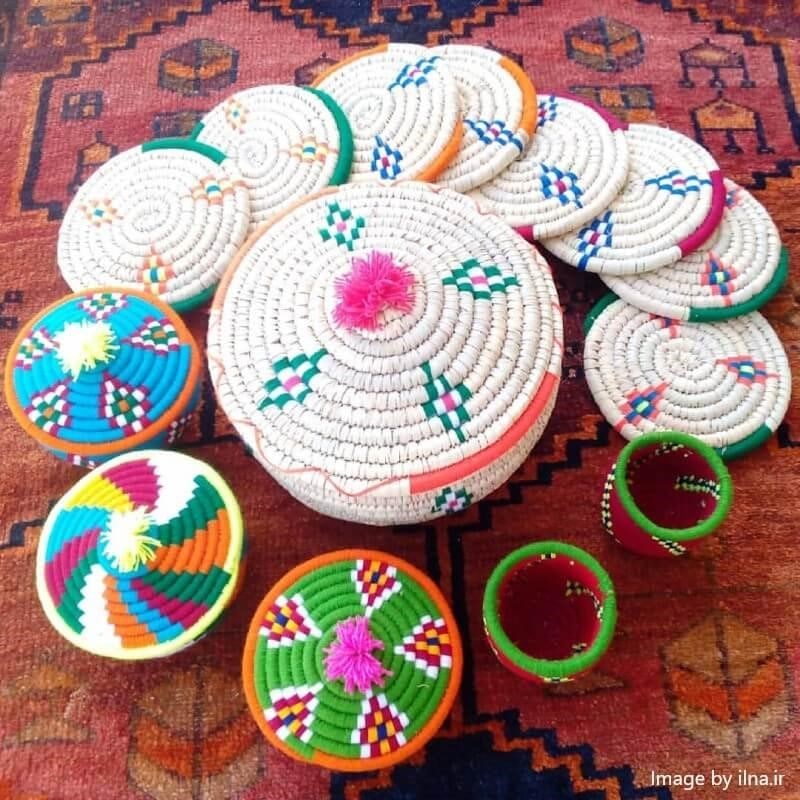
One of the ancient handicrafts still prevalent in the northern and southern regions of Iran is wicker weaving. Date palm leaves, wheat stalks, reeds, and all kinds of leaves and branches are used in wicker weaving. Today, wicker handicraft art is available to buy as souvenirs in roadside gift shops.
Various techniques of wicker weaving include the following:
- Booria Bafi: The ancient technique of weaving straw and grass.
- Chigh Bafi: A nomadic tradition of weaving straw and goat hair to create a textile known as Parawan in town markets.
- Bamboo Weaving: In this type of wicker, bamboo reeds are used for weaving textiles.
- Kapu Bafi: Date palm tree leaves are used in the production of Kapu wicker handicrafts.
- Tarkeh Bafi: Making all kinds of dishware using thin branches from trees and shrubs is called Tarkeh (branch) Bafi.
- Arghawan Bafi: Arghawan is the name of the Eastern Redbud shrub in Persian. Its branches are used to make all kinds of baskets.
- Morvar Bafi: Making different types of baskets using branches of the Morvar tree or the purple willow (Salix purpurea).
- Cham Bafi: It is similar to Tarkeh Bafi and Morvar Bafi.
Leather Handicrafts in Iran
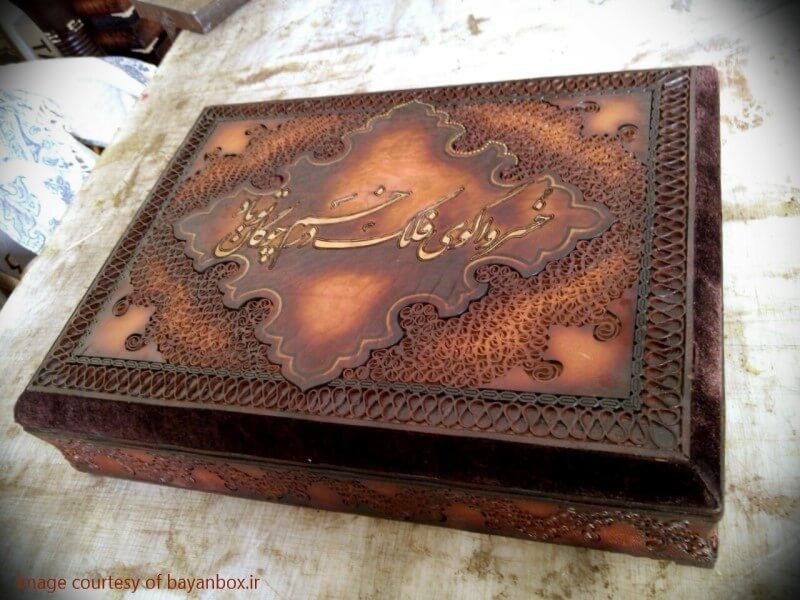
Leather products are among the most famous handicrafts in Iran, made in different parts of the country. Leather handicrafts are considered animal products and one of the most exported handicraft products in the world.
Leather handicrafts are prepared in different ways, which include:
- Leather engraving: used to decorate book covers.
- Sarraji: It is a traditional leather-making technique used to make leather bags, shoes, horse saddles, etc.
- Sookht Rooye Charm or leather heat embossing: It includes hammering a hot mold onto the leather that leaves a dark brown trace. This leather-making technique is used in book cover decoration.
- Leather Marquetry or leather patchwork: In this method, leather layers of equal thickness are attached together. Leather marquetry is used to make ornamental tableau or decorate accessories such as earrings, necklaces, etc.
Traditional Dye-making in Iran
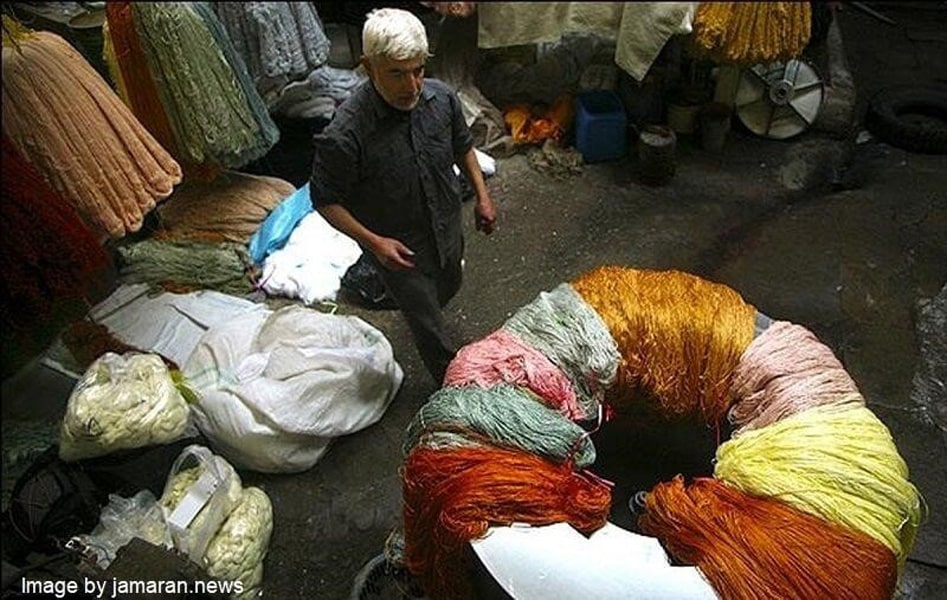
This craft became popular after the weaving and textile crafts expanded. Traditional dye-making is the practice of extracting color pigments from local plants and other sources to produce natural dyes.
Among the most important plants used in traditional dyeing, we can mention Dyer’s madder, pomegranate, wild onion peels, and castor oil. In this craft, sometimes insect larvae are used for dyeing.
This field of Iranian handicrafts includes the following crafts:
- Extracting vegetable dyes: The dye is prepared using pomegranate peel, onion, etc.
- Extracting animal dyes: the feathers of a tiny insect called Ghermez Daneh (Cochineal) are used in this method.
- Making mineral dyes: It is prepared from minerals such as Lead(II) oxide.
- Preparing chemical dyes: It is made of chemicals.
- Ink making: The production of ink for painting and calligraphy.
Traditional Dyeing
Traditional dyeing practices are used in various industries, like woodworking and making paper, and in preparing various types of fabrics (such as silk and cotton).
Traditional Clothing in Iran
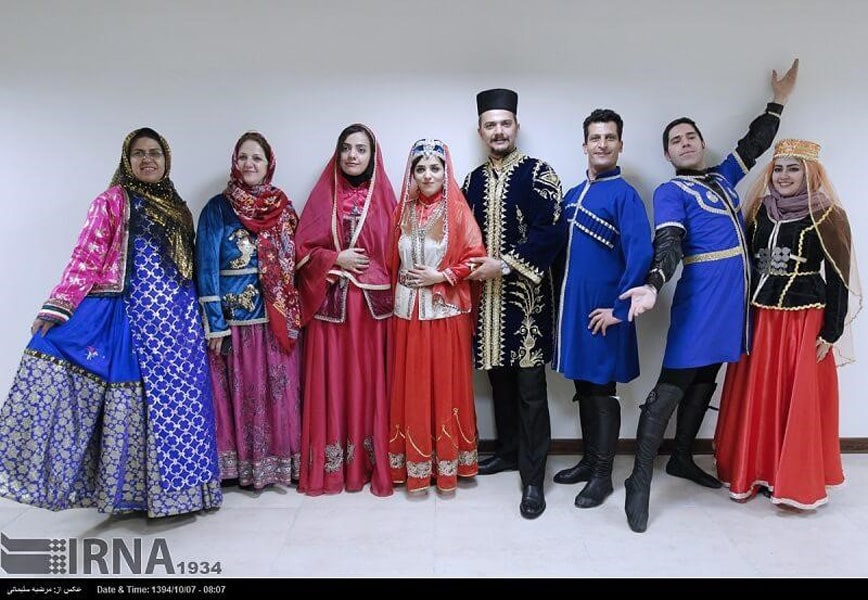
Villagers and nomads in different regions of Iran produce unique traditional clothing that is considered their cultural heritage. These traditional clothes are technically considered textiles and leather handicrafts. Traditional Iranian clothing includes ethnic garments, quilts, and traditional footwear such as Charoogh, Chamoosh, Kalash, and Giveh.
Other Iranian Handicrafts
There are emerging handicrafts in Iran that are less recognized. Among these arts, the following can be mentioned:
- Print-based Handicrafts: These crafts include bookmaking, bookbinding, book cover design, and traditional paper cutting.
- Marine handicrafts: These crafts are popular in coastal areas and cities near the sea. Among the beautiful handicrafts in this field, we can mention carving and painting on seashells.
Integration of architecture and handicrafts: This fusion led to the creation of crafts such as plasterwork, mirrorwork, traditional wall painting, brickwork, and Sarooj. - Making traditional musical instruments: includes handmade guitars, Setars, and other Persian musical instruments.
- Bone engraving and painting: It is considered one of the emerging handicrafts in Iran.
Most Famous Handicrafts in Iran
Iranian hand-woven carpets are among the most significant and well-known Iran handicrafts, which are woven with beautiful patterns based on ethnic and national motifs. These works of art are known not only domestically but also internationally. Carpets and other similar industries such as rugs, Kilim and Ziloo are well recognized on a global scale.
The history of such artworks goes back to the Achaemenid era and plays a vital role in introducing Iranian culture and art to the world. Samples of Iranian carpets are on display in museums in Iran and all over the world of their unique beauty. Some of them are also woven into carpet tableaus and placed in mansions and houses.
As you know, Iranian carpets are woven from different raw materials, such as wool and silk. Silk carpets that have silk warpage are more valuable.
These carpets are manufactured in different designs and in many colors. Among Iran’s most famous carpet designs, we can mention the Shah Abbasi design, Slimi (Arabesque) design, Boteh Jegheh or paisley design, tree design, Tribal and Nomadic design, and geometric patterns.
These designs are present all over Iran and in different cities. Kashan, Isfahan, Qom, Tabriz, Heris in East Azerbaijan, Fars, Kerman, Mashhad, Bandar-e Torkman, Hamedan, and Kurdistan are famous cities in Iran with unique traditional carpet designs. All these cities are world famous.
Iranian Urban and Rural Handicrafts Recognized by UNESCO
The World Crafts Council operates under the supervision of UNESCO. Therefore, countries submit their cases to this council to register culturally significant artworks and handicrafts. Between 2015 and 2020, Iran submitted cases from 11 cities and three villages to this council. The names of these cities and villages and their respective Iran handicrafts are listed below:
- Isfahan: the first registered city with more than 130 crafts
- Mashhad: ornamental stones
- Shiraz: wood inlaying, Marquetry, Khatam Kari, Giveh weaving
- Malayer: Marquetry work on sofa and other wooden surfaces
- Tabriz: carpet and rug weaving
- Zanjan: traditional bladesmithing and crafting knives and Filigree making
- Lalehjin: World Craft City for its ancient pottery and ceramic craft
- Abadeh City in Fars province: Marquetry
- Meybod City in Yazd Province: World Craft City for Ziloo weaving
- Marivan in Kurdistan Province: World Craft City for crafting Kalash or local Giveh shoes
- Sirjan in Kerman Province: World Craft City for Kilim craft
- Khorashad village in South Khorasan Province, East of Birjand: World Craft Village for Tow Bafi
- Ghasem Abad village in Mazandaran Province: World Craft Village for Chador-Shab Bafi
- Kalporagan village, 26 km from Saravan in Sistan and Baluchistan Province: dubbed the world craft village for pottery. The village is considered a living Museum of Iranian Pottery.
The Popularity of Iran Handicrafts in Other Countries
Many examples of Iranian handicrafts can be visited in museums and historical monuments around the globe. Among these artifacts, the following are notable:
The Significance of Persian Carpets and Textiles to the Polish Court During the Safavid Era
The reign of Shah Ismail and Shah Tahmasp of the Safavid dynasty was the peak of the prosperity of Iran’s carpets and textiles craft. Tabriz was considered the capital of carpet weaving in Iran during this period. In addition, the cities of Hamedan, Shushtar, Harat, and Kashan also played a significant role in developing this art.
Shah Tahmasp’s interest in carpets and rugs was the reason behind the blossoming of this art. He was so interested in this art that he designed some rugs and ordered their weaving. Then, he donated these carpets to Suleymaniye Mosque in Istanbul, Turkey.
After Shah Tahmasp’s death, traditional carpet production did not stop. Therefore, this led to more prosperity and the creation of famous carpets during the Safavid era.
In fact, after his death, Shah Abbas Safavi transformed carpet weaving into a national art and a huge industry by setting up various carpet-weaving workshops in Kashan and Isfahan. During this period, silk and even gold carpets were woven in Kashan. Also, other expensive carpets were crafted by Iranian artists on the order of the Safavid King and other countries.
For example, Zygmunt III sent his trusted royal supply officer with special orders from Warsaw to Iran. He was an Armenian businessman named Safar Muratovich. He had ordered the weaving of several carpets by Iranian artists for the Polish king. The results were silk carpets of unparalleled elegance and quality woven with silver or gold-silver threads called Golabtun.
This collection of carpets was mistakenly called Polish or Polonzi in later periods. These products were also referred to as royal workshop products.
The Manifestation of Iran Handicrafts in Taj Mahal
This famous building was built by a famous and experienced architect named Ustad Isa or Mullah Murshid Shirazi. It is a symbol of Persian art in India. The Taj Mahal building is a fusion of Persian and Indian architectural styles, creating a unique phenomenon.
The tomb inside the Taj Mahal is similar in style to the Indian Mandala but is also consistent with the ancient Persian craft styles. The design of this tomb can be seen in the Chahartaqi designs of ancient Iran. The Taj Mahal is a kind of tomb-garden architectural style that has been common in Iran for a long time. The tomb of Cyrus in Pasargad is an obvious example.
The Taj Mahal can be seen as the manifestation of Iranian architecture or the evolution of Persian-Islamic architecture in the Indian subcontinent. To prove this claim, we can examine the architectural style of examples such as Fin Garden in Kashan, Chehel Sotoon Palace in Isfahan, Eram Garden in Shiraz, and others. We can compare their plans and design principles with the Taj Mahal.
Iranian Paintings and Artworks in Museums Worldwide
Iran has one of the world’s oldest and most authentic civilizations and many ancient artifacts in museums. Many of these artifacts were taken out of the country for various reasons. The main reasons were the incompetence of kings, theft and looting, war, and unlicensed, unprofessional excavations.
Today, many of the country’s national treasures and ancient Iranian handicrafts are kept in museums abroad. Some of these museums are:
The Metropolitan Museum of Art in New York
There are artifacts and objects from different periods of Islam and Iran’s history in the Metropolitan Museum, such as Isfahan carpets, Khamsa of Nizami, a Persian Cuirass (Char-aina) armor from the Safavid era, and Achaemenid Persian Lion Rhyton.
State Hermitage Museum in Russia
Several Iranian antiquities are kept in the third-floor hall of the Hermitage Museum, which contains the following:
- Old paintings from the 16th to the 19th century
- Qajar-era paintings and Sassanid silverware
- Pazyryk rug
Louvre Museum in France
The Louvre Museum is one of the most prestigious museums in the world with over 35,000 ancient artifacts. There is a hall in the Louvre known as the Hall of Iran, where ancient Iranian artifacts are displayed. 2,500 pieces of Iranian national heritage can be visited in this hall, including massive and small objects. Some of these works are:
- two-headed horse cha
- winged goat on a mask of Silenus
- Column capitals from Persepolis
- Stone sculptures
- Shahnameh manuscript
- Inscriptions of Darius I
Victoria and Albert Museum, London
There is a carpet called Ardabil Rug in the museum, which was used to cover the tomb of Safi-ad-din Ardabili in the distant past. This carpet is considered one of the most exquisite carpets in the world and one of the most outstanding examples of Iran handicrafts. Even its warp and weft are made of silk.
Iranian Modern and Contemporary Art in International Galleries
After the passing of the famous Iranian painter Kamal-ol-Molk, the Iranian modern art movement was born. Then, between 1950-1960, movements such as the Saqqa-khaneh school emerged. Below we introduce the supporters of the mentioned movements who are known worldwide for their art:
Sohrab Sepehri
He is one of the contemporary Iranian painters and poets who wrote his poems inspired by Buddhism, mysticism, and Western tradition in a new form of poetry with less attention to rhyme and meter. In addition, his paintings have been exhibited in famous international galleries as one of the leading modern Iranian paintings.
He is one of the pioneers of the Saqqa-khaneh movement and is known as a painter and sculptor. He is famous for transforming the Persian word “Hich”(nothing) into three-dimensional sculptures. Tanavoli’s works are on display in many international exhibitions.
Behjat Sadr Mahallati
She is the first contemporary female painter in Iran whose paintings were recognized at the same level as male painters. She used a palette knife to add visual rhythm and movement to her paintings. The works of this great painter were exhibited in famous galleries in Paris, Rome, and New York.
The Impact of Iran Handicrafts on Domestic Economy
In developing countries like Iran, creating employment for youth is one of the most critical challenges. It is possible to create various job opportunities to combat unemployment by relying on domestic potentials, including handicrafts.
Revival of these crafts, which have deep roots in the nation’s customs, traditions, and popular culture, can help the country move away from oil exports. Handicraft production is among local independent industries whose raw materials are readily available in the country. Since the production of handicraft products is very convenient and does not require much investment, it generates added value.
Iranian handicrafts can become a seasonal and permanent activity in rural and nomadic areas where livestock farming and agriculture are the main occupations. In addition, establishing handicraft workshops can create employment in the city.
The Best Places to Buy Iran Handicrafts
Today, various handicraft festivals are held in different cities in Iran. Holding these festivals aims to expand the industry and create cultural interest.
In addition, handicraft shops have been established in different parts of Iran with more professional practices. Different types of handicrafts made by Iranian artists are on sale in these shops. They are primarily established near historical attractions and museums.
Exporting Iranian Handicrafts to The World
Iran ranks third in the field of handicraft exports in the world (after China and India). In this context, the largest importers of Iran handicrafts are the following countries:
Asia: Saudi Arabia, Kuwait, UAE, Qatar, Yemen, Turkey, Syria, Lebanon, Malaysia, South Korea, and Japan.
Africa: Morocco, Egypt, Libya, Kenya, and South Africa.
Europe: France, Austria, Italy, Sweden, and Denmark.
North America: Canada and the United States.
In addition, Latin America is an emerging market for Iranian handicrafts.
Conclusion
It is a global belief that buying handicrafts from the local communities of tourist destinations can help achieve sustainable tourism principles and support the local economy.
Iran handicrafts have a great variety and are created by Iranian artists in different parts of the country. We can generate jobs for the young population with wise investments in this field. Considering that learning these crafts is not a difficult task, this can be achieved by creating handicraft workshops.
These handicrafts are part of Iran’s cultural heritage, and most handicraft exhibitions are next to historic buildings. So you can also visit various handicraft exhibitions while visiting historical monuments and cultural heritage sites. UNESCO has recognized some of these handicrafts as Iran’s intangible cultural heritage, many of which are listed on the Iran national heritage list.
Frequently Asked Questions About Iranian Handicrafts
If you cannot find the answer to your question here, leave us a comment in the comment section below this post and ask your question. We will answer it as soon as possible.
Which of Iran’s handcraft arts are on the list of Iran handicrafts?
Iranian handicrafts can be divided into the following categories:
- Hand-woven and loom-woven textiles
- Traditional embroidery
- Metal handicrafts
- Mina Kari or Vitreous Enamels
- Pottery handicrafts
- Glassware
- wooden handicrafts
- Stone handicrafts
- Miniature painting
- Traditional prints
- Handicraft wool clothing
- Felt-making
- Wicker weaving
- Leather handicrafts
- Traditional color extraction and dyeing practices
- Traditional clothing
Are Iranian souvenirs and handicrafts popular worldwide?
Iranian handicrafts have their own fans in foreign countries. In recent years, many efforts have been made to introduce various Iranian handicrafts to foreign interests and facilitate exports.
What are the most famous Iran handicrafts among foreign tourists?
Among the most popular Iranian handicrafts among foreign tourists, the following can be mentioned:
- Handmade carpet and rugs
- Iranian Miniature painting
- Copper and glass dishware
- Pottery and ceramics
- Mosaic and Mina Kari
- Sermeh embroidery
Is there an Iranian handicraft store online?
In recent years, websites specializing in this field have started to work due to the large volume of requests for online purchases of Iranian handicrafts worldwide.
What are the most famous handicrafts in Iran worldwide?
Persian hand-woven carpet is one of Iran’s most famous and popular handicrafts.
What is the reason for the popularity of Iranian carpets?
The most important reason for the global recognition of Iranian handwoven rugs is their high quality and unique color combination. The art and elegance of Iranian weavers are world-famous.
Where is the best place to buy Iran handicrafts for foreign tourists?
The best place to buy all kinds of Iranian handicrafts is to visit permanent stores near museums and historical attractions. In addition to these stores, Iranian business people have shown interest in supplying authentic and quality Iranian handicrafts online.
Which countries are the top importers of Iranian handicrafts?
Iranian handicrafts are mainly exported to the Arab countries of the Persian Gulf, Turkey, and Asian countries such as South Korea and Japan. Some European and African countries are also interested in Iranian handicrafts.
What are the most famous handicrafts of Isfahan?
Khatam Kari or inlaying, Mina Kari or vitreous enamel, and the calligraphy of Isfahan are just a few examples of the city’s many handicrafts.






